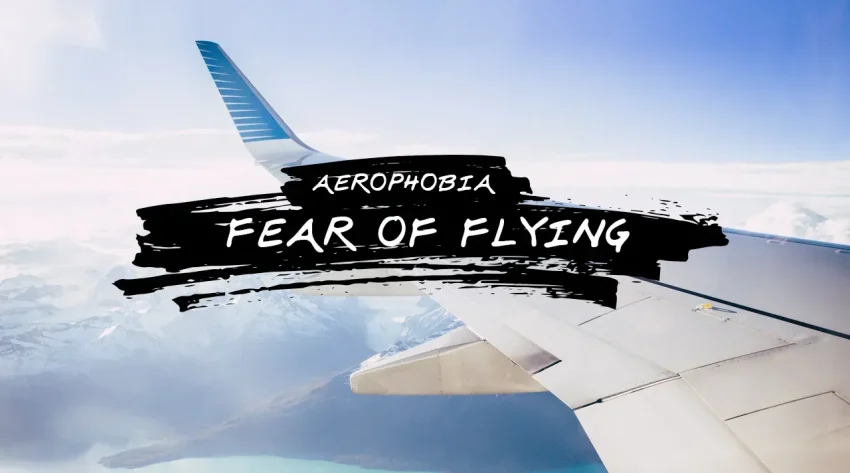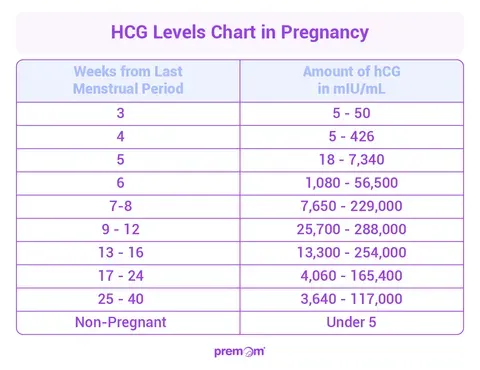Fear of Flying: Overcoming Anxiety During Flights
Fear of flying is a common struggle among many individuals who find themselves filled with anxiety during flights. While some passengers enjoy the thrill of being airborne, others dread the very thought of taking to the skies, often seeking flight anxiety solutions to help them cope. This anxiety can stem from various sources, including past traumatic experiences or the sensationalist media that emphasizes flying mishaps. For those grappling with this apprehension, overcoming fear of flying is not only possible but can also lead to newfound freedom and exploration. Techniques such as exposure therapy for flying can equip anxious travelers with the tools they need to manage their flight-related fears and enjoy air travel.
The trepidation associated with air travel, often referred to as aviophobia or flight phobia, affects countless individuals. This distress can manifest not just as a fear of heights but as an overwhelming sense of panic at the very thought of boarding an aircraft. Whether it’s a fear of turbulence, enclosed spaces, or even the loss of control, many find themselves searching for effective strategies to combat this anxiety. Techniques such as gradual exposure and cognitive behavioral methods can provide impactful approaches to dealing with flying anxiety. By understanding and addressing these fears, individuals can embark on journeys that once seemed impossible.
Understanding the Fear of Flying
Fear of flying, also known as aviophobia, is a complex condition that can affect anyone, regardless of previous flying experiences. It often encompasses various anxiety disorders, such as panic disorder and claustrophobia, which can manifest in intense fear at the thought of boarding an aircraft. Many people develop a fear of flying after experiencing a traumatic event or witnessing media portrayals of aviation disasters, leading to heightened anxiety during flights.
Statistics highlight the growing prevalence of flight anxiety, with research indicating that 65% of individuals feel more unsettled about flying due to increasing reports of accidents and incidents. As such, it’s essential to recognize that fear of flying is not just a personal hurdle but a common issue that many individuals endure, underscoring the need for effective coping strategies for overcoming this widespread anxiety.
Effective Strategies for Overcoming Fear of Flying
One of the most effective treatments for overcoming the fear of flying is exposure therapy, a cognitive-based approach that gradually exposes patients to the source of their anxiety. By systematically facing their fears, individuals can learn to tolerate their discomfort and reduce the avoidance behavior that typically accompanies flight anxiety. Achieving familiarity with flying conditions, such as turbulence and in-flight announcements, can significantly alleviate anticipatory anxiety.
Additionally, practicing mindfulness and grounding techniques can empower individuals struggling with flying fears. Techniques like box breathing and progressive muscle relaxation not only help calm the nervous system but also promote a sense of control during each flight. Understanding your anxiety triggers and employing these strategies can contribute to a more positive flight experience.
The Role of Mindfulness in Managing Flight Anxiety
Mindfulness plays a crucial role in managing flight anxiety, allowing individuals to stay present and reduce overwhelming thoughts that often accompany fear of flying. By focusing on the present moment and engaging in breathing techniques, such as deep inhales and exhales, individuals can combat the physical symptoms of anxiety, such as rapid heartbeat and shallow breathing.
Cultivating mindfulness during flights can transform a nerve-wracking experience into a manageable one. Instead of fixating on distressing sensations, individuals can visualize themselves flying in a serene state, reinforcing a calm mindset and reducing the fear response. This shift in focus allows those with flight anxiety to embrace their journey, rather than resist it.
Dealing with Flying Anxiety Before the Flight
Preparing for a flight involves more than just packing a bag; it requires addressing anticipatory anxiety that may arise in the days leading up to travel. Experts recommend having a structured plan that includes familiarizing oneself with the flying process, obtaining information about the flight, and employing relaxation techniques that can ease the mind. This preparatory phase, integral for overcoming fear of flying, equips individuals with the tools needed to confront their anxiety.
Another effective strategy is to create a ‘flight toolkit’ that includes items designed to soothe anxiety. These can range from personal mementos to noise-canceling headphones and calming playlists. By preparing these tools ahead of time and implementing a strategic routine, individuals can significantly alleviate their anxiety and cultivate a more positive mindset towards their upcoming flight.
Cognitive Behavioral Techniques for Flight Anxiety
Cognitive Behavioral Therapy (CBT) is a well-established method for treating various anxiety disorders, including fear of flying. This therapeutic approach focuses on reshaping negative thought patterns and replacing them with more constructive ones. By challenging catastrophic thinking—such as the belief that every flight may lead to disaster—individuals can anchor themselves in the reality of flight safety statistics and personal experiences of successful flights.
Incorporating CBT techniques into flight preparation can further empower individuals. By visualizing a successful journey or rehearsing positive affirmations, those facing fear of flying can bolster their confidence. Engaging in therapy or workshops focused on this mental approach can be transformative and lead to enduring improvements in anxiety management.
Exposure Therapy as a Solution to Flight Anxiety
Exposure therapy stands out as an effective solution for individuals grappling with flight anxiety, as it encourages systematic desensitization to the feared stimulus. This type of therapy often begins with less intimidating experiences, such as watching videos of flying, then slowly progresses to visiting an airport and culminates in actual flight. Through gradual exposure, anxiety can decrease over time, making the overall flying experience less daunting.
This technique not only helps in desensitizing the fear response but also equips individuals with coping strategies to tackle anxiety symptoms as they arise. By experiencing the flights in a controlled manner, individuals can learn that their fears are often unfounded, thus reinforcing their self-efficacy and willingness to confront flying.
Social Support in Managing Flight Anxiety
Sharing your fears with trusted friends or family members can provide crucial emotional support during the process of overcoming anxiety around flying. Having a supportive travel companion can be especially beneficial, as they can offer reassurance and distract from anxieties during the flight. Furthermore, engaging with communities, either online or in-person, allows individuals to share their experiences and coping techniques, creating a sense of solidarity.
Social support systems play a vital role in anxiety management, as they can provide emotional comfort and practical advice for facing fears. Understanding that others share similar experiences can normalize the fear of flying, making individuals feel less isolated in their anxiety and encouraging them to seek solutions together.
The Importance of Post-Flight Reflection
After successfully navigating a flight, it’s crucial to engage in post-flight reflection to reinforce positive experiences. Many individuals tend to focus on what went wrong during a flight, which can perpetuate a cycle of fear. Instead, recounting successful moments, no matter how small, can build confidence and promote a sense of accomplishment, crucial for addressing fear of flying.
By collecting evidence of success, such as recognizing that one remained calm despite discomfort, individuals can shift their mindset from avoidance to acceptance. This approach not only contributes to emotional growth but also reinforces resilience, preparing individuals for future flights with a newfound sense of empowerment.
Finding Professional Help for Flight Anxiety
Seeking professional help can be an invaluable step in addressing and overcoming fear of flying. Therapists trained in anxiety management and exposure therapy can provide tailored strategies that align with individual experiences. The guidance of a qualified professional ensures a structured approach to addressing fearful thoughts and behaviors that often accompany flight anxiety.
As therapy progresses, individuals can gain insight into their fears and learn how to implement coping strategies effectively. Joining group therapy or workshops focused on flight anxiety can also foster a supportive environment where individuals can share challenges and successes, enhancing the treatment experience.
Frequently Asked Questions
What are effective methods for overcoming fear of flying?
Overcoming fear of flying often involves exposure therapy, which gradually exposes you to the idea of flying while teaching you coping mechanisms. Techniques like deep breathing, mindfulness, and progressive muscle relaxation are also effective for managing anxiety during flights.
How can I deal with anxiety during flights?
Dealing with anxiety during flights can be managed by practicing relaxation techniques such as box breathing or mindfulness. Informing the flight crew about your anxiety can also help, as they can provide support and reassurance during the flight.
What are some flight anxiety solutions I can use before boarding?
Before boarding, consider enrolling in an online course focused on flying confidence, or engage in mental prep through information gathering about flight safety. Setting a plan for relaxation, like meditation or a calming playlist, can also help ease pre-flight anxiety.
Is exposure therapy for flying effective?
Yes, exposure therapy for flying is an evidence-based treatment that helps individuals confront their fear gradually, which can significantly reduce flight anxiety over time. Many have reported improvements after a structured exposure therapy program.
What steps can I take to prepare for facing my fear of flying?
To prepare for facing your fear of flying, start with educating yourself about aviation basics and safety procedures. Gradually simulate the flying experience, like visiting an airport or taking short flights, to lessen anxiety and build confidence.
| Key Point | Details |
|---|---|
| Fear of Flying Definition | Fear of flying encompasses various anxiety-related conditions including specific phobia, panic disorder, and generalized anxiety. |
| Experiencing Flight Anxiety | Flight anxiety can arise from past traumatic flying experiences or a history of anxiety disorders. |
| Expert Recommendations Before the Flight | Use exposure therapy to gradually confront fears, and consider training programs such as ‘Flying Without Fear’ that help ease anxiety. |
| During the Flight Techniques | Utilize relaxation techniques such as box breathing and mindfulness, while also acknowledging and accepting anxious feelings. |
| Post-Flight Reflection | Focus on successful aspects of the flight rather than negative experiences to reinforce positive outcomes. |
Summary
Fear of flying is a common issue that affects many individuals across the globe. To overcome this challenge, it is essential to understand the underlying anxiety that can transform a peaceful flight into a stressful experience. By employing expert strategies such as exposure therapy and relaxation techniques, individuals can effectively manage their fear of flying. It’s important to cultivate a mindset that embraces discomfort as a part of growth, ensuring that each journey can become a triumph rather than a trial.
#FearOfFlying #FlightAnxiety #TravelCalm #OvercomeFear #AnxietyReliefTips








